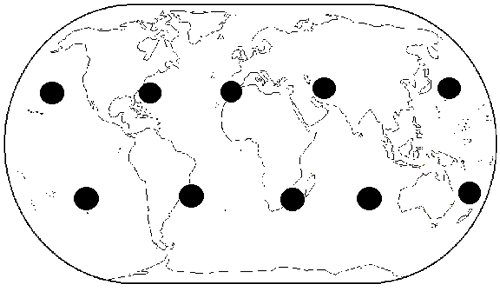

“This would make any ship floating above sink like a rock.” 1, 2 He proposes that subterranean landslides may unlock the gas, allowing it to bubble to the surface and reduce the density of the water. Clennell claims that methane gas, locked below the sea sediments, may be responsible for some of the mysterious disappearances. Ben Clennell, of Leeds University, England, one explanation cites the presence of vast fields of methane hydrates on the North Atlantic’s continental shelves. Stockard, project director as saying, "We have passed over the area hundreds of times and never noticed any unusual magnetic disturbances." 6 Rosenberg, author of “Exorcising the Devil’s Triangle” quotes Henry P. 7įor over 20 years, Navy's Project Magnet has surveyed the world, mapping the earth's magnetic fields. 5 In reviewing aircraft and seafaring vessel losses over the years, the military has discovered nothing that indicates the disappearances are the result of any metaphysical cause. 4Īccording to the US Coast Guard, Navy, and some investigators, the number of losses is unsurprising, considering the Bermuda Triangle’s size, location and the amount of traffic it receives. 1 Lloyd’s of London, the world's leading market for specialized insurance, does not charge higher premiums for vessels that navigate these busy waters. Fleets of both commercial and private aircraft also frequent its skies.

The Bermuda Triangle encompasses one of the most heavily sailed shipping lanes in the world, with commercial vessels, cruise ships and pleasure craft navigating it daily. The causes of Bermuda Triangle vanishings are often attributed to the paranormal, a suspension of the laws of physics, or even UFOs and extraterrestrial beings. No physical trace of either vessel has ever been found. The Navy believes that the Cyclops probably sank in an unexpected storm and that Flight 19 probably ran out of fuel and crashed into the ocean. The most notable US Navy losses, which have occurred in the Bermuda Triangle, are USS Cyclops in March 1918 and the aircraft of Flight 19 in December 1945. However, in his 1975 book, “The Bermuda Triangle Mystery Solved”, author Larry Kusche reported that few investigated the mystery before passing on the speculations and rumors that surrounded each incident. Over the years, there have been dozens of articles, books, and television programs promoting the mystery of the Bermuda Triangle.

It wasn’t until February 1964 that Vincent Gaddis coined the name “Bermuda Triangle” in an article published by Argosy Magazine. Sand was the first to define the borders of the then, unnamed Bermuda Triangle. Sand described the disappearance of several airplanes and ships, including the story of Flight 19 in the October 1952 issue of Fate magazine. In his article, “Sea Mystery at Our Back Door”, George X. Jones opened the floodgates of Bermuda Triangle notoriety in the first published newspaper article on the subject, distributed on September 16, 1950, by the Associated Press.

6 However, some authors trace its peculiarities back to the time of Christopher Columbus, claiming he was the first to document the strange phenomena of the Bermuda Triangle. 1, 2, 5 Composing the Bermuda TriangleĪccording to author Howard Rosenberg, during the past century more than 50 ships and 20 aircraft vanished in the Bermuda Triangle, also known as the Devil's Triangle or the Hoodoo Sea. However, depending on which author you believe, the size of the Bermuda Triangle varies from 500,000 square miles to over a million miles. 2, 4Īs described by most Bermuda Triangle authors, the apexes of the triangle are roughly defined as pointing to Miami, Florida San Juan, Puerto Rico and the Island of Bermuda. No US Government-issued maps delineate the boundaries of the Bermuda Triangle. Board of Geographic Names does not recognize the Bermuda Triangle as an official name and does not maintain an official file on the area.


 0 kommentar(er)
0 kommentar(er)
